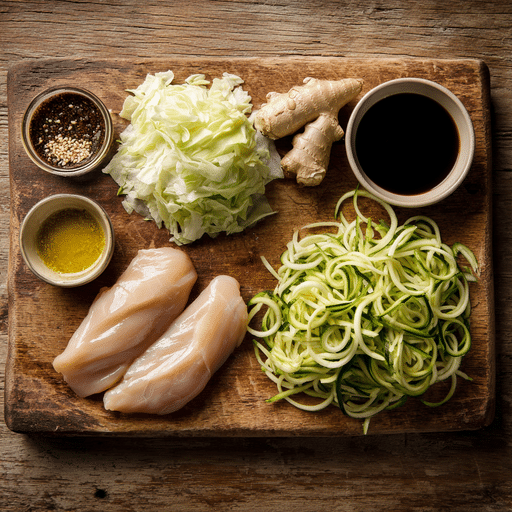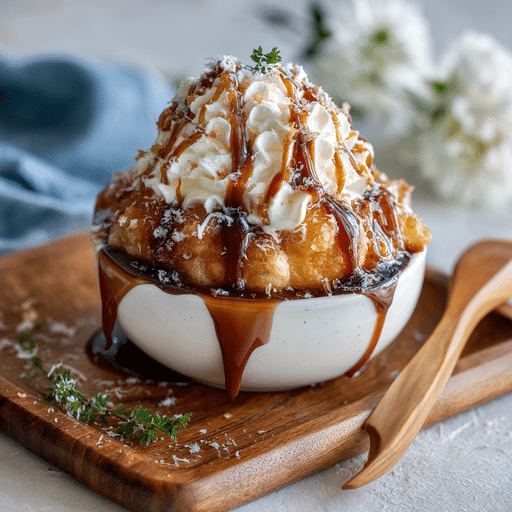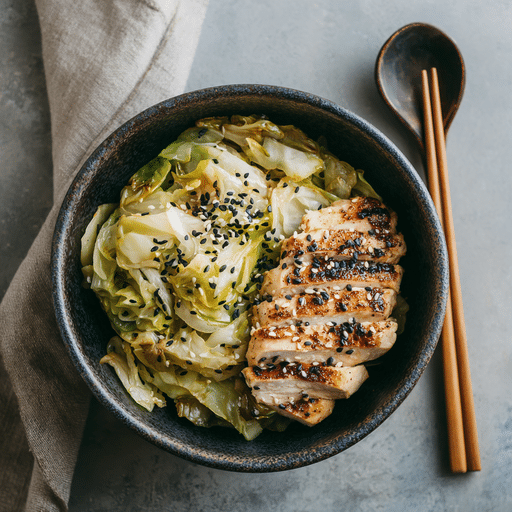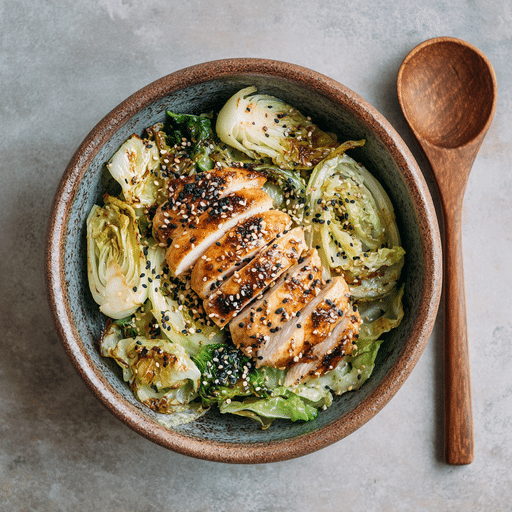Intro
Japanese Mounjaro Recipe is more than just a low-carb meal—it’s a smart, satisfying way to stay on track without giving up flavor. If you’re using Mounjaro, you know how important it is to fuel your body with meals that are high in protein, low in sugar, and gentle on your digestion. This recipe brings together clean Japanese-inspired ingredients and a simple cooking method you can count on, even on busy days. It’s fast, flexible, and full of flavor—because eating well shouldn’t feel like a punishment. At Sweetain, we believe food should support your life, not control it. This dish delivers balance, satisfaction, and a little bit of joy in every bite.
Why This Japanese Mounjaro Recipe Works in Real Life
Japanese Mounjaro Recipe—it’s not just a meal, it’s a shift in how you eat to feel good. When I started developing recipes for people using Mounjaro, I noticed one big problem: everything felt either bland, too clinical, or overly complicated. That’s not how I eat. And it’s definitely not how I want you to eat.
This dish was inspired by the light, balanced meals I always admired in Japanese cuisine—clean protein, minimal sugar, and flavors that don’t overwhelm you. I wanted something that could deliver that same nourishing feel but still fit into a Mounjaro-friendly lifestyle. That meant keeping it low-carb, high in protein, and filling without being heavy. And of course, it had to be easy to make on a real-life schedule.
This Japanese Mounjaro recipe came together in my kitchen on a day when I was short on time but needed something grounding. With simple ingredients like lean chicken or tofu, tamari, sesame oil, and quick-cooked veggies, it hit all the marks: quick, healthy, and totally comforting. The kind of food you actually want to eat—whether you’re managing your blood sugar or just craving something light but flavorful.
At Sweetain, I’ve always believed food should meet you where you are. This Japanese Mounjaro recipe does just that. It’s flexible, it’s nourishing, and most of all—it’s doable. No guilt, no second-guessing, just a solid meal that supports your goals and tastes amazing. Let’s get into how to make it
I’ve always believed food should meet you where you are—whether that’s a full dinner or a quick, high-protein snack like this avocado on toast breakdown, it’s about real choices.

How to Make a Japanese Mounjaro Recipe Step-by-Step
Making a Japanese Mounjaro recipe doesn’t mean complicated ingredients or hours in the kitchen. It’s actually one of the easiest ways to get a balanced, low-carb, high-protein meal on the table—without the overwhelm. You just need a few clean staples, a hot pan, and about 20 minutes.
Here’s how I do it. Start with your protein: skinless chicken breast, tofu, or salmon are great picks. Slice it thin so it cooks quickly and evenly. Sear it in a little sesame oil over medium heat until golden and cooked through. This gives your dish that rich, nutty base flavor that makes Japanese-inspired meals so satisfying.
Next, toss in quick-cooking veggies—like shredded cabbage, mushrooms, spinach, or zucchini noodles. Keep the cooking time short to preserve the crunch and nutrients. Then drizzle in a simple sauce: tamari (or low-sodium soy sauce), a splash of rice vinegar, and a little grated ginger. That’s it. No sugar bombs, no mystery ingredients.
This Japanese Mounjaro recipe is all about layering flavor without layering stress. You’re looking for balance—umami from the tamari, freshness from the veggies, protein for fullness, and healthy fats to round it out.
Top it with sesame seeds or chopped scallions if you like. Serve it in a bowl, keep it light, and enjoy how good clean eating can feel.
What I love about this recipe is how easily it fits into the Mounjaro lifestyle. It keeps carbs low, digestion smooth, and energy stable. And honestly? It tastes like something you’d get from a cozy Tokyo café—but made right in your kitchen.
Want a metabolism-boosting add-on with your meal? Try sipping on my protein coffee recipe while you prep—it’s hormone-friendly and super satisfying.
What Makes This Recipe Mounjaro-Friendly?
The beauty of this Japanese Mounjaro recipe is how effortlessly it supports your health without feeling restrictive. When you’re on Mounjaro, eating in a way that helps manage blood sugar and supports steady energy is key. That doesn’t mean cutting out everything you love—it means choosing smart combinations. And this recipe does exactly that.
First, let’s talk about macronutrient balance. This dish centers around lean protein—whether that’s grilled chicken, tofu, or salmon. Protein is the foundation of every Mounjaro-friendly plate because it helps keep you full longer, supports muscle repair, and prevents blood sugar spikes.
Next, we’re going low on carbs but not skipping them entirely. Instead of starchy noodles or rice, this Japanese Mounjaro recipe leans on shredded cabbage, zucchini noodles, or spinach to fill your bowl. These options are high in fiber and volume, helping you feel satisfied without overloading your system with sugar.
Then there’s the sauce. Most takeout-style dishes are loaded with sugar and sodium, but this version uses tamari or low-sodium soy sauce, ginger, and rice vinegar for flavor—no sweeteners needed. It’s light, zesty, and supports digestion.
And finally, fat. A little sesame oil adds richness and flavor while helping your body absorb fat-soluble vitamins. Healthy fat also contributes to satiety—something that’s especially helpful while on Mounjaro.
This Japanese Mounjaro recipe fits perfectly into a balanced, real-life approach to wellness. It’s designed to work with your body, not against it. That’s why it’s one of my go-tos for busy days when I want something that fuels me, fills me up, and still feels like a treat.
For a well-rounded day of Mounjaro-friendly meals, pair this dinner with something like my vanilla protein shake in the afternoon—it’s quick, balanced, and low in sugar.
Make It Yours – Variations + How to Serve It Right
This Japanese Mounjaro recipe isn’t just healthy—it’s highly customizable. That’s what makes it perfect for real-life eating. Whether you’re adjusting for dietary needs, cravings, or just want something different, there are endless ways to make this your own.
Start with the base of this Japanese Mounjaro recipe: lean protein and sautéed veggies. While chicken is always reliable, you can easily switch it up. Try shrimp for a lighter feel, or go with tofu or tempeh for a plant-based version that still checks the high-protein box. If you want a richer taste, grilled salmon or even tuna works beautifully.
When it comes to vegetables, the sky’s the limit. Zucchini noodles, shredded cabbage, spinach, bok choy, and mushrooms are all low-carb, fiber-rich choices. These help keep the Japanese Mounjaro recipe filling without causing a carb spike—so you stay full, focused, and satisfied longer.
As for flavor? A tamari-ginger base is classic, but adding lime juice, chili flakes, or even a spoonful of tahini turns this into something totally new. You can even meal prep the components and mix them fresh during the week. That’s smart eating, Sweetain-style.
Serve your Japanese Mounjaro recipe in a bowl, topped with sesame seeds, scallions, or a soft-boiled egg. It’s warm, simple, and absolutely packed with feel-good flavor. Whether you’re tracking macros or just want food that works with your wellness plan, this is one recipe you’ll keep coming back to.
If you’re craving something sweet after dinner, I’ve got you covered—this healthy cottage cheese cookie dough keeps carbs low and satisfaction high.

Frequently Asked Questions
What is a Japanese Mounjaro recipe?
A Japanese Mounjaro recipe is a low-carb, high-protein dish inspired by traditional Japanese flavors—like tamari, sesame, and fresh vegetables—but adapted to suit people following the Mounjaro lifestyle. It’s designed to help stabilize blood sugar, reduce cravings, and keep meals satisfying without the extra carbs.
Are Japanese Mounjaro recipes good for weight loss?
Yes. Because they’re built around lean proteins, healthy fats, and fiber-rich vegetables, Japanese Mounjaro recipes are excellent for weight loss. They support fullness, help manage hunger, and align with the goals of people using Mounjaro for metabolic support.
What ingredients are safe for Mounjaro-friendly Japanese dishes?
Look for low-carb, whole-food ingredients like chicken, tofu, eggs, zucchini, cabbage, spinach, mushrooms, tamari, and sesame oil. Avoid sugar-heavy sauces, starchy noodles, or high-sodium processed ingredients to keep your Japanese Mounjaro recipe clean and effective.
Can I make this Japanese Mounjaro meal in under 30 minutes?
Absolutely. This recipe is fast and easy—perfect for busy days. With pre-cut veggies or a protein that cooks quickly like shrimp or tofu, you can make a full Japanese Mounjaro recipe in 20 minutes or less.
Conclusion
This Japanese Mounjaro recipe brings together everything we believe in at Sweetain—real food, simple steps, and flavor that supports your life, not controls it. It’s not just a low-carb, high-protein meal; it’s a way of eating that fits into your real, busy world. No rules. No guilt. Just smart choices that taste amazing.
The beauty of this recipe is how effortlessly it blends balance and joy. It’s nourishing without being boring, comforting without being carb-heavy. Whether you’re following a strict Mounjaro protocol or simply trying to feel better in your own body, this dish gives you what you need—satisfaction, energy, and simplicity. And it proves that healthy eating doesn’t mean giving up the flavors you love.
With just a few wholesome ingredients and less than 30 minutes, you get a warm, flavorful bowl full of protein, fiber, and clean fuel. It’s the kind of meal that doesn’t just check the nutritional boxes—it actually leaves you feeling good after you eat.
So the next time you need a dinner that works for your goals and still feels like comfort food, come back to this Japanese Mounjaro recipe. It’s one of those rare meals that truly meets you where you are—and helps move you forward, one delicious bite at a time.
Stay inspired! For more real-life recipes like this Japanese Mounjaro Recipe, follow along on Facebook and Pinterest for weekly ideas that taste great and feel good.


Japanese Mounjaro Recipe – A Low-Carb Japanese-Inspired Dish You’ll Feel Great About
Ingredients
Method
- Slice the protein into thin strips.Heat sesame oil in a skillet over medium heat.Add protein and cook until golden and cooked through.Toss in cabbage, zucchini, and mushrooms. Sauté for 3–4 minutes.Add tamari, rice vinegar, and ginger. Stir gently to coat everything.Cook 2 more minutes, then remove from heat.Serve in bowls, topped with scallions, sesame seeds, or a soft-boiled egg.
Nutrition
Notes
- Swap chicken for shrimp, tofu, or salmon.
- Add chili flakes or lime juice for a flavor boost.
- Pre-cut veggies can speed up prep even more.
- Keeps well for 2–3 days in the fridge.
